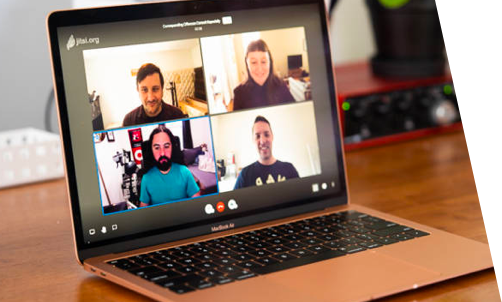
A former colleague shared an illuminating story about a presentation he had to deliver at a staff conference.
He had always admired the delivery style of one of his senior managers - so off the cuff, full of amusing anecdotes, interesting, relaxed yet informative. Yes, that’s how my friend wanted his presentations to be. No longer stilted and scripted. Clearly the trick was to be spontaneous, in the moment. That is how he would deliver his presentation to the 200 attendees at the staff conference.
What happened? He described his 20 minutes on the podium as one of the most uncomfortable of his life. He stumbled, lost his thread, his amusing lines feel flat. He missed some of his key points. Totally embarrassing.
Sometime later in the company of the senior manager whose presentation style he so admired, he asked how he was able to present so effortlessly. The manager said something he would never forget. “Effortless delivery takes real effort.” He explained the lengths he went to ensure that he perfected his delivery, how he crafted his presentation, endlessly rehearsing every aspect his delivery until it appeared off the cuff. If only my friend had known that before.
A good presentation can make a career, creating a strong impression with the right people. A poor presentation can do the very opposite. Good leaders are generally good communicators and great presenters.
I have worked with many executives who must deliver important presentations to their boards, investors or internal audiences. They know to rehearse properly.
Increasingly I am asked about presenting virtually. The same principles apply with some additional rules.
Here are my top 5 tips to help you deliver a great presentation.
1: Create an engaging introduction and a strong conclusion:
Research would suggest that you have just 30 seconds to set the tone before your audience decide if you are worth giving their attention to.
Start with and interesting or unusual fact. Ask a question with a show of hands. Get the audience involved right away.
One memorable start that I observed was from a CEO who was presenting on the theme of building trust He asked the staff audience to take out their phones, unlock them and pass it to the stranger beside them. He asked them how they felt handing over something that contained so much personal details, messages, photographs. You could sense how uncomfortable everyone was when they weren’t sure if they could trust the person beside them with their phone. A very powerful way to demonstrate the key message and engage the audience right from the off.
Equally, work on an impactful finish. Avoid the hard stop! Summarise your key message. Finish with memorable line or a quote that will resonate with your audience.
2: Up your rehearsal game:
How many times have left the creation of your presentation to the last minute? You are still finalising the visuals when you should have been working on your delivery. You convince yourself that a couple of run throughs will leave you good to go.
Good presenters give adequate time to rehearse. It is not possible to say if the answer is 10, 20 times or more. Take whatever time it takes to craft your message, practice your gestures, perfect your tone. What looks like spontaneous is often the result of endless rehearsal.
3: Record yourself:
We all have access to our own video and playback studio…our phone. Record your self to identify distracting habits, poor eye contact, too many hmmms, distracting use of your hands. This is particularly true when presenting virtually.
4: Rehearse in front of colleagues and friends:
Avoid a situation where the first time you deliver your presentation is the moment you must do it for real. Ask some colleagues or friends if they would sit in on your rehearsal and give you some quality feedback. If it is a virtual presentation, then rehearse virtually and ask them how it came across.
5: Recreate the real-life situation as closely as possible:
Try where possible to replicate the real-life scenario in your rehearsal. If it is a face to face delivery, get access to the room, test the technology that you will be using on the day. Get comfortable with your new environment. The same applies to virtual delivery. Ensure you are comfortable with the software that you will be using. Check broadband speed and wifi strength, test sound and lighting. Leave nothing to chance.
In summary, a presentation delivered well can be an enjoyable if slightly stressful event. Nothing beats the feeling of delivering a great presentation when you know you have nailed it. However, as my colleague found out, when you do not prepare well you may be disappointed with the outcome.
If only he had known “effortless delivery takes real effort.”

